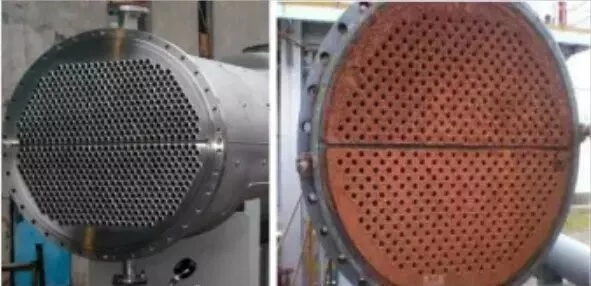Optimizing Heat Exchanger Performance with Chemical Cleaning
Heat exchangers play a vital role in a myriad of industries such as petroleum, chemical, light industry, pharmaceutical, and energy production. However, prolonged operation of these heat exchangers leads to the accumulation of dirt within, causing a reduction in the cross-sectional area of the internal passages. This accumulation, in turn, results in decreased cooling water flow, lowered pressure, and potential downtime, eventually leading to production shutdowns. Moreover, it poses serious safety risks, including issues like blisters, cracks, and tube explosions.

Chemical Cleaning Methods for Heat Exchangers
Chemical cleaning serves as a crucial solution to address these issues. This method involves inducing specific chemical reactions through a cleaning solution to dissolve, shed, or peel off scale and other deposits on the surface of the heat exchanger's transfer tubes.
One notable advantage of chemical cleaning is that it eliminates the need to disassemble the heat exchanger, streamlining the cleaning process and reducing the overall labor required. However, it is crucial to note that improper selection of the chemical cleaning fluid can lead to corrosion and damage to the substrate, resulting in substantial losses.
Common Chemical Cleaning Agents
There are several types of chemical cleaning agents used in this process:
Various Methods of Chemical Cleaning
Chemical Cleaning Process for a Heat Exchanger
In summary, chemical cleaning is essential for maintaining efficient heat exchanger performance, preventing safety hazards, and ensuring uninterrupted industrial operations. Careful agent selection and systematic cleaning processes are pivotal for reliability and longevity.

Before and After Heat Exchanger Operation
Chemical Cleaning Methods for Heat Exchangers
Chemical cleaning serves as a crucial solution to address these issues. This method involves inducing specific chemical reactions through a cleaning solution to dissolve, shed, or peel off scale and other deposits on the surface of the heat exchanger's transfer tubes.
One notable advantage of chemical cleaning is that it eliminates the need to disassemble the heat exchanger, streamlining the cleaning process and reducing the overall labor required. However, it is crucial to note that improper selection of the chemical cleaning fluid can lead to corrosion and damage to the substrate, resulting in substantial losses.
Common Chemical Cleaning Agents
There are several types of chemical cleaning agents used in this process:
- Dissolution-based Cleaning Agents: These include water and organic solvents that remove dirt through dissolution.
- Surfactant Cleaning Agents: These consist of cationic, anionic, nonionic, and zwitterionic surfactants that leverage surface active effects to remove dirt.
- Chemical Cleaning Agents: This category involves the use of acids, alkalis, salts, oxidants, etc., to remove dirt through chemical reactions.
Various Methods of Chemical Cleaning
- Circulation Method: This involves using a pump to force the cleaning fluid to circulate for thorough cleaning.
- Immersion Method: The equipment is filled with the cleaning solution, allowing it to sit for a specified period.
- Surge Method: This method includes filling the equipment with cleaning liquid, intermittently discharging and reintroducing part of the cleaning liquid to achieve stirring and cleaning.
Chemical Cleaning Process for a Heat Exchanger
- Isolation and Water Drainage: Begin by isolating the equipment and draining the water from the heat exchanger.
- High-pressure Water Cleaning: Clean pipeline impurities using high-pressure water, and subsequently close the system.
- Ball Valve Installation: Install a ball valve, connecting it to the delivery pump to pump the cleaning agent in from the bottom and allow it to flow out from the top.
- Cleaning Agent Injection: Inject the required cleaning agent and repeat the cleaning process.
- Gas Discharge and Water Injection: Discharge gas as needed and inject appropriate water.
- pH Testing: Utilize pH test paper to determine the effectiveness of the cleaning agent.
- Recovery and Rinsing: Recover the cleaning solution and rinse the system repeatedly with clean water until the pH becomes neutral.
In summary, chemical cleaning is essential for maintaining efficient heat exchanger performance, preventing safety hazards, and ensuring uninterrupted industrial operations. Careful agent selection and systematic cleaning processes are pivotal for reliability and longevity.

